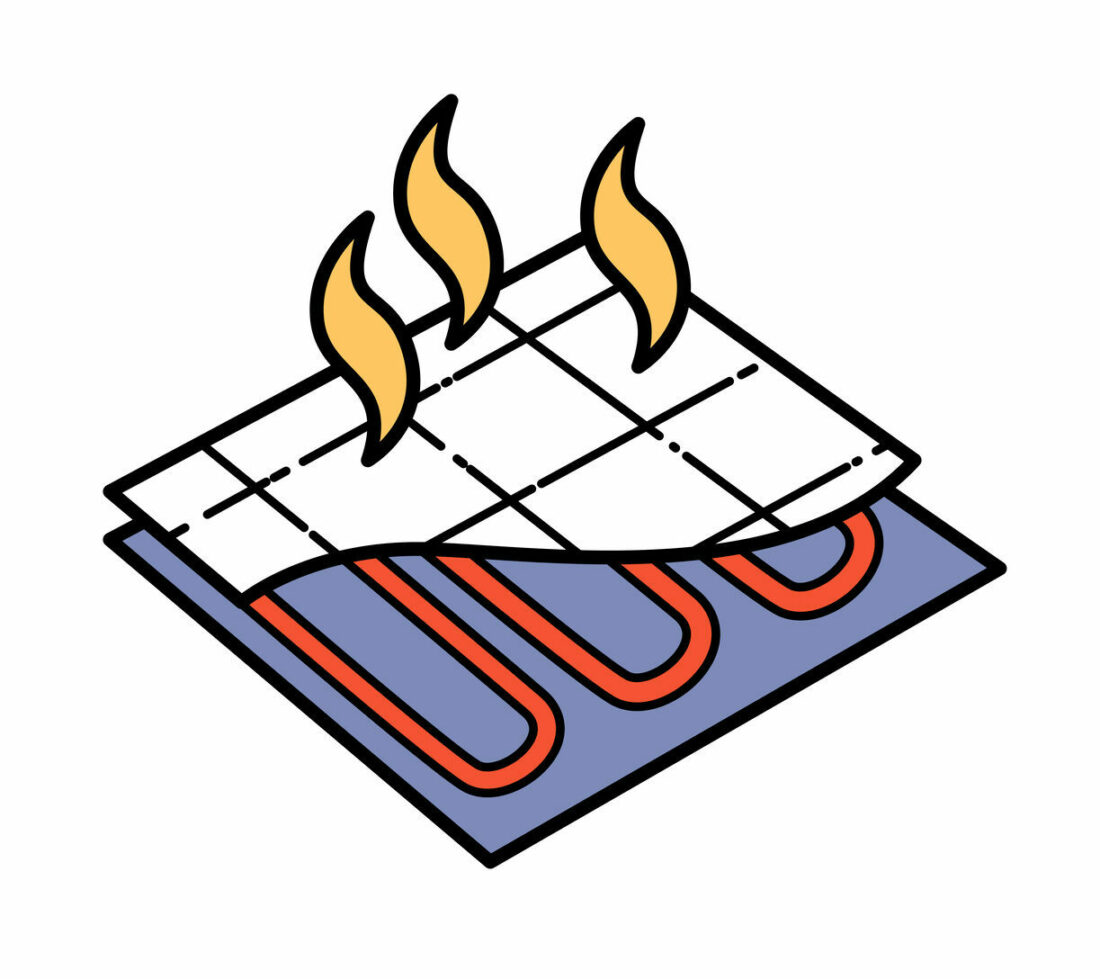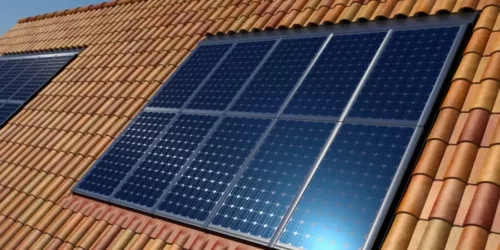Pros and Cons of Underfloor Heating You Weren’t Aware Of
- Lesser known facts about underfloor heating systems
- Installation issues and benefits
- Wet and electric underfloor heating
Underfloor heating is not a new way of heating your home. In fact, the concept has been around since 5000 BC. The modern, wet underfloor system as we know it started to hit the market as late as the 1960s. The main benefit of having an underfloor heating system is an even spread of heat that warms up the rooms more ecologically than other central heating methods.
This article will go through various benefits and drawbacks of underfloor heating, both wet systems and electric, and point out elements that aren’t particularly well known. It will detail the wide range of uses this energy efficient heating can be put to, and help you decide how to implement it.
Looking to run your electric underfloor heating with solar panels? Use our quote comparison tool to get quotes in your area. It only takes a minute.

What's On This Page?
Click the links below and head straight to a specific section of the article.
Types of Underfloor Heating
Generally, heating through the floor works the same across different types. Warmth is distributed to the home through pipes buried under the floor of a room. This can be in as many or as few rooms as you choose and operates using electric and water based heat.
Wet System
Warm water is distributed from the boiler or other heat source, such as a ground source heat pump, to a series of continuous pipes buried underneath the flooring. Insulation is placed under these pipes to make sure the heat is directed into the room. These systems have their own thermostat and regulate their temperature themselves, usually operating continuously.
As the pipes are laid continuously throughout the room, you don’t experience cold spots like you would with a traditional heating system, like radiators. Only if a fault develops will this happen, but professions can adjust the manifolds to take care of this.
Electric System
Instead of water filled pipes, a series of electrical wires are coiled underneath the flooring. Insulation is also placed under these to ensure the room warms up. These work on mains electricity and can be switched on or off when needed. Just like a wet system, these coils are laid continuously to prevent cold patches.
The Pros of Underfloor Heating
For the benefits, you can expect both wet and electric underfloor heating solutions to provide the following:
Better energy efficiency
No loss of space
Low maintenance
Easy installation
Integration
Energy Efficient
As the space taken up by underfloor heating pipes is more spread out than traditional central heating methods, they generally heat rooms more quickly. As such, they can be operated at lower temperatures. Radiators tend to run at 60-70°C, whereas wet underfloor heating runs at a fraction of this, at 35-50°C.
Because they can operate at lower flow temperatures, they can be paired with low carbon systems, such as ground source heat pumps. It’s generally believed that this kind of heating is at least 25% more energy efficient than a standard radiator system. This makes pairing these systems more economical in the long run.
Space Saving

As the pipes are buried beneath the floor, you can utilise more space in your home, offering you a seamless design. More options are available to you when radiators aren’t blocking walls. Furniture can also be moved to multiple locations without being dictated by how close they are to radiators or air grilles.
Lack of Maintenance

The best part about underfloor heating compared to radiators is the minimal maintenance involved. While radiators need bleeding from time to time, heating under the floor is much more dependable and can usually be left to run without issue.
Electric systems are even more reliable as they have less that can go wrong with them. A wet system might need to be checked by a professional in the rare event that it isn’t working properly, but they are generally maintenance-free.
Installation
Electric underfloor heating is incredibly easy to install. Without much disruption, the circuits can be connected in a small room inside a day. As it works much like an immersion heater, a simple switch is all that’s required in order to operate it.
Built-in thermostats prevent the system from overheating, which can damage floor finishes, adhesives and other items above it.
Integration
Perhaps the most exciting benefit of underfloor heating is how it can be linked with low carbon systems. If your home is well insulated and you have a ground source heat pump, these can work perfectly well with a wet underfloor system.
This type of heat pump operates at low flow temperatures and can easily handle the hot water requirements for a wet system. It can even be 30% more efficient than using radiators. An air source heat pump can also be used, but this will only be around 20% more efficient than radiators.
You can also integrate underfloor heating with solar panels.
Underfloor Heating Cons
The drawbacks to having underfloor heating systems include the below:
High costs
Lengthy install time
Raised floors
Pricey
The underfloor heating cost, including parts and installation, can be incredibly high. Wet systems will set you back more as the pipework is more technical than electric systems. Other factors, such as how insulated your home is and the size of the room you’re fitting underfloor heating to, greatly affect the price you will end up paying. If your home isn’t up to scratch, the system will be more expensive.
Labour costs can also put people off. Installation for underfloor heating can cost between £200 and £300 a day. For a whole house to be fitted with water underfloor heating, this could take a couple of days, but larger homes can easily take longer than this. You can see rough estimations of timings and costs in the interactive graph below.
Installation
Another drawback is that underfloor systems can be invasive to install. If you’re completely upgrading your system from radiators, it’s often best left to be included as part of larger renovation works as it can be factored into your project. Wet underfloor heating requires a level of insulation first, before a pipe fixing system can be attached.
Once the pipes are in place, screed will need to be laid and allowed to dry. After this point, your choice of flooring can be applied. If radiators need to be removed, this will take longer. Likewise, if a ground source heat pump is also being installed, this will prolong the length of the project work.
Flooring

Depending on which system you choose to install, you might have to be considerate of how this will raise the height of the flooring.
Electric systems are virtually flat, without much height to them, but a wet system has more layers and can add about 21mm in a worse case scenario, depending on the type of screed, insulation and piping used. This can have the added effect of infringing upon the space of existing features of the room, such as the bottom of doors, which will need to be cut down to fit.
On top of this, you’ll need to consider what type of flooring you’ll fit. You can install a whole range of flooring types on top of underfloor heating, but rooms with carpet will need to be thinner to avoid heating the carpet and not the room. You can buy carpet with a hessian backing, which allows more heat through than rubber will, but this will drive up your costs. If your flooring is too thick, it can hinder the desired temperatures, so you might have to replace particularly bulky flooring.
Looking for inspiration? Here's some eco tips for how you can add value to your home.
Price of Underfloor Heating Solutions
There are many factors that affect how much you would pay to heat your home through the flooring. These include which system you choose and the size of the rooms in question. How old the building is will also have a great effect, as retrofitting will always be more expensive than setting it up as a home is built.
The aspects you would need to consider include the labour costs and how long it would take to complete the job. Underfloor heating does not have a quick installation process, so bear in mind the amount of disruption you will see during the whole process.
You can see typical costs of installing underfloor heating, both wet and electric, in the table below.
If you’re thinking about installing a heat pump and/or solar panels at the same time, these amounts will be even higher. As they are a match made in heaven, they will bring costs down instantly and provide huge savings in the long run. The only downside is that the payback period will be longer.
To help bring down costs, you can see if you qualify for solar panel grants. You may be eligible to get solar installed for free, depending on your circumstances.
In terms of heat pumps, the Boiler Upgrade Scheme is available, which gives you £7,500 towards the cost of either a ground or air source heat pump. When you replace a gas boiler, your installer should automatically deduct this from your total. As heat pumps are set to be much cheaper by 2030, this could bridge the gap between now and then.
Related articles
View all Solar Panel articles
A Complete Guide to Caravan Solar Panels

Are Solar Panels Worth It in Wales?

Project Solar UK: Company Overview

Battery Storage for Solar Panels Explained

Solar Panel Kits Explained - Everything You Need to Know

Are Solar Roofing Tiles Worth It?

A Complete Guide to Roof Integrated Solar Panels







